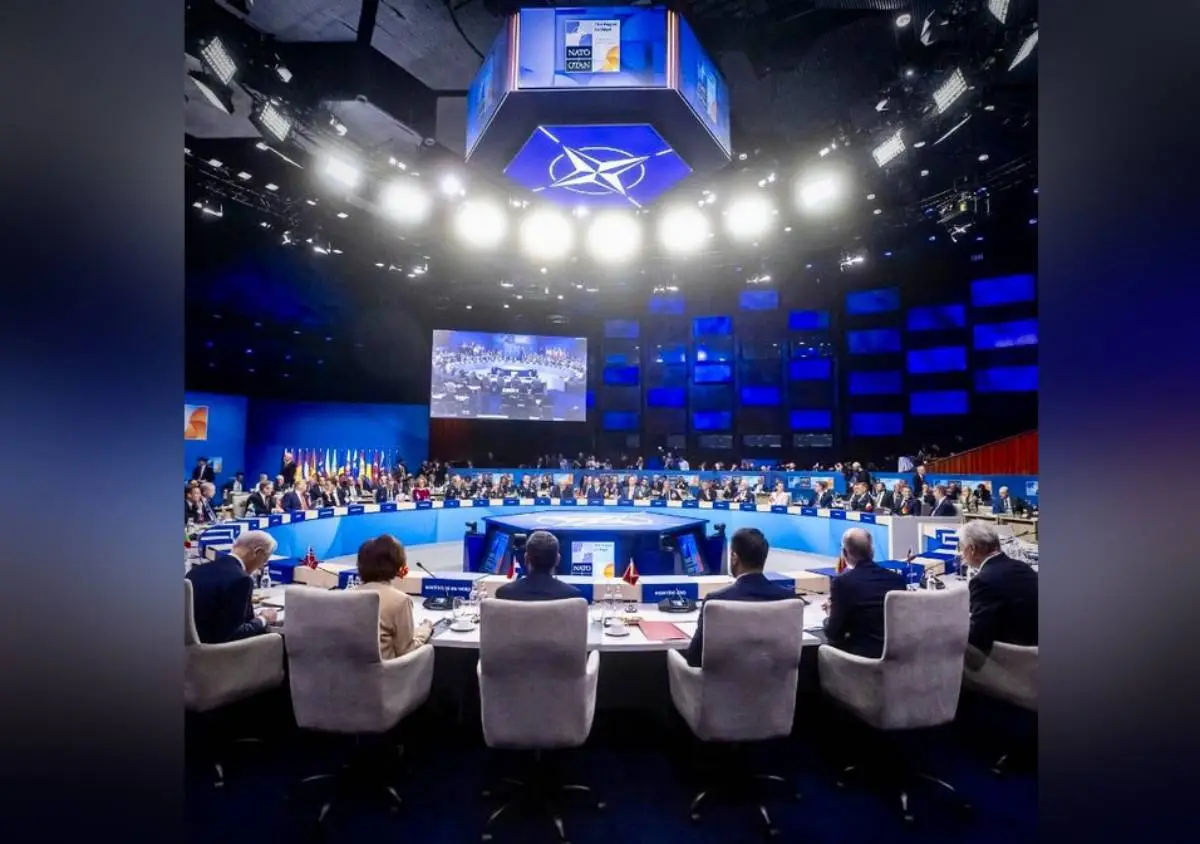
India Offers Non-Aligned Strategic Edge To NATO
ROME (IANS)- The NATO summit held recently in The Hague signaled a significant shift in the alliance’s strategic focus, moving from its traditional Euro-Atlantic concerns to increasingly prioritize the Indo-Pacific. This pivot is driven by escalating conflicts in the Indo-Mediterranean and China’s growing alignment with Russia, recognizing that Asia’s stability directly impacts Euro-Atlantic security.
NATO’s Evolving Indo-Pacific Strategy
NATO’s engagement with the Indo-Pacific began before the Ukraine war, with the alliance quietly deepening ties with democratic partners like Japan, Australia, South Korea, and New Zealand (the IP4). These relationships were eventually institutionalized through the “IP4” format. However, Russia’s invasion of Ukraine in 2022 and China’s subsequent alignment with Moscow sharpened Brussels’ view. The 2022 NATO Strategic Concept explicitly stated that China’s “coercive policies challenge our interests, security, and values.” At The Hague, this stance hardened further, with China identified not only as a systemic rival but also as a “decisive enabler” of Russia’s war machine.
Despite this increased focus, NATO’s ambitions in the Indo-Pacific are limited by design. The alliance doesn’t seek to become an Indo-Pacific bloc or replicate its Euro-Atlantic structure in Asia. Instead, it aims for “strategic elasticity” through flexible partnerships, practical coordination, and technological interoperability. The goal is to enhance deterrence without requiring formal alignment.
India: A Necessary Partner, Not an Ally
This is where India plays a crucial role, not as an ally, but as a necessary partner. India remains committed to strategic autonomy and non-alignment. It isn’t part of the IP4, nor will it seek NATO membership or treaty-bound commitments. New Delhi has historically resisted bloc politics and maintains strong historical ties to Moscow, even as it diversifies its defense posture. However, this autonomy shouldn’t be mistaken for passivity. In recent years, India has developed a proactive Indo-Pacific agenda, exemplified by its SAGAR doctrine (“Security and Growth for All in the Region”) and, more recently, the ‘Mahasagar’ initiative, announced in late 2024.
Mahasagar (Sanskrit for “great ocean”) signals India’s intent to become the principal architect of stability in the Western Indo-Pacific. It combines maritime domain awareness, defense-industrial cooperation, and blue economy coordination across the Arabian Sea, the Bay of Bengal, and the African littoral. Importantly, it also envisions interoperability with like-minded navies and the integration of undersea surveillance and cyber capabilities. While not aimed at any single actor, Mahasagar is a clear strategic counterweight to China’s “Belt and Road” naval encirclement of the Indian Ocean.
Complementary Strengths: Quad and NATO
India’s role in the Quadrilateral Security Dialogue (Quad)—alongside the United States, Japan, and Australia—already positions it as a key player in balancing China’s influence. However, the Quad isn’t a military alliance; it operates through consensus and capacity building. NATO, on the other hand, brings something complementary to India’s toolkit: institutional experience, shared standards, and operational maturity across cyber, AI, and undersea deterrence. Where the Quad offers alignment of vision, NATO offers alignment of capability.
There are already practical examples of this collaboration. In 2024, India conducted joint exercises with the Italian aircraft carrier Nave Cavour, demonstrating high-level interoperability. India has also participated in multilateral operations like Sea Dragon alongside the United States, Japan, Australia, and Canada. NATO, for its part, has established pathways for defense tech integration with partners in the region. At The Hague, it unveiled new initiatives in cyber defense, counter-disinformation, AI, and dual-use industrial cooperation—all areas where India has growing interest and capability.
Pragmatic Cooperation Over Formal Alliance
These engagements won’t lead to formal alliance structures. New Delhi won’t sign a collective defense pact or open NATO bases. However, this isn’t what the current moment demands. What it demands is pragmatic, modular cooperation—shared exercises, aligned technical standards, and secure communication frameworks that allow both sides to jointly respond to maritime instability, cyber threats, and supply chain vulnerabilities.
There’s also a deeper, systemic rationale for engagement. Trade routes through the South China Sea and Taiwan Strait aren’t abstract concerns for Europe. Nearly 40% of global trade flows through these waters. A limited conflict—for instance, over Taiwan—would immediately disrupt global supply chains, raise commodity prices, and destabilize energy flows. In other words, Euro-Atlantic security is no longer bounded by geography; it’s bounded by connectivity. India, situated at the strategic hinge of East and West, is uniquely positioned to help NATO manage this transition.
A Partnership of Complementary Interests
None of this negates India’s long-standing preference for autonomy. In fact, NATO’s appeal lies precisely in its ability to work with India without violating that principle. What is emerging is a partnership without alliance—a relationship grounded in complementary interests, not identical identities.
Looking ahead, NATO must resist the temptation to replicate its Atlantic formula in the Indo-Pacific. Instead, it should build on the logic of flexible geometry: deep engagement with the IP4, tailored cooperation with India, and cross-platform initiatives involving the Quad and EU Indo-Pacific strategies. For India, this is an opportunity to shape the regional order without surrendering independence. For NATO, it’s a way to remain globally relevant without overreaching.
The future of deterrence won’t be defined by static treaties but by dynamic networks. As the international order frays and new coalitions emerge, NATO and India have a narrow but vital opportunity to build one of the most consequential security partnerships of the century—one that respects autonomy, avoids entanglement, and is anchored in shared strategic necessity.




